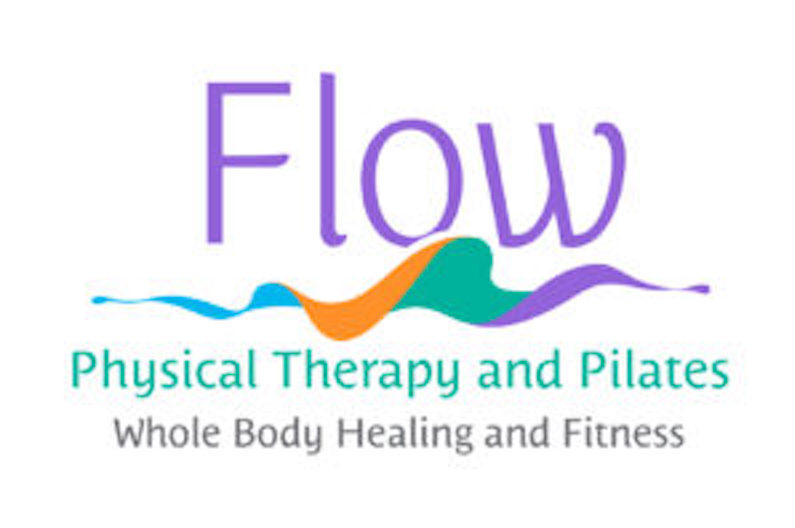Two weeks ago I wrote a blog about posture, its importance, and how to improve it. Posture is the foundation of injury prevention. Yet, if I didn’t discuss workspace setup, it would be like sending you out to ride a bike without pedals. Sure you could make the thing roll, but it wouldn’t feel too spiffy after a while. Too much time in a bad setup can make any work situation feel miserable. This is where ergonomics comes into play.
What is ergonomics for your workspace?
Ergonomics is defined by Merriam-Webster’s dictionary as “an applied science concerned with designing and arranging things people use so that the people and things interact most efficiently and safely.” In the workplace setting, this means making sure your desk, chair, and electronic devices are positioned optimally to fit your own body. This is also known as office ergonomics.
Office ergonomics can involve evaluating your chair for the proper height and support. It can also be measuring your desk or work platform for height and where your most used objects are placed. Office ergonomics analyze how your electronic devices, such as a laptop, computer, and mouse, are set up as well. Another aspect of it could be the surface you stand on or the position you hold most often.
There are a variety of areas that office ergonomics studies. All of these components are meant to do one thing – keep you in the most energy efficient, safe posture.
Why is workspace setup important?
One common cause for injuries comes from repetitive use or repetitive strain. Repetitive strain can come in the form of doing the same motion or activity over and over. Assembly line work, typing, and lifting are examples of this. Repetitive strain also happens when an awkward position is held for a long period of time. For example, plumbers and electricians working overhead, hairdressers holding arms up to style hair, or dental hygienists leaning forward to clean teeth.
Repetitive strain injuries accounted for 30% of the cases in 2018 in which employees missed work, according to the U.S. Bureau of Labor Statistics (BLS). The median number of days away from work in 2020 was 8 days. Carpal tunnel syndrome resulted in a median of 28 days away from work in 2015 per the BLS.
All this time away from work adds up financially. Employers pay for employees that aren’t working. Worker’s compensation pays for medical visits. Lastly, the employee themselves sometimes lose out on income or potential promotions as well.
However, the less pragmatic view of repetitive strain injuries is the emotional toll of this kind of injury. Being in pain is mentally exhausting. Constant pain and injury can lead to depression and decreased perceived quality of life. A 2013 literature review found that chronic pain adversely affects mood, social life, sleep, participation in activities, and daily activities. Who wants to get up every weekday and work if it causes pain?
What are the benefits of a good workspace setup?
In light of the previous section, we can easily say the proper workspace setup can decrease or eliminate pain and injuries by reducing repetitive strain. If we decrease the likelihood of injury, we can save our PTO days for fun instead of healing.
A good workspace setup improves brain function as well. In short, your brain can think and problem solve more easily when it doesn’t have pain to distract it. You can focus more easily when your brain isn’t multitasking work duties and pain processing. A study in 2016 to assessing the impact of pain on cognition found that chronic pain significantly decreased memory, attention, processing speed, and executive functioning. You work faster and more focused without pain.
Lastly, a well setup workspace can decrease stress. Cohesion with your workspace means your body doesn’t feel like it is fighting its own surroundings. Less stress at work allows for more enjoyment of activities outside of work, such as socializing with family and friends. It sets up a situation in which everybody wins.
How do I make my workspace work for me?
Here’s where you get to tell your workspace “You’re not the boss of me!” Before you stomp your non-ergonomic laptop as you spew profanities at it, take a step back. Don’t take a chainsaw to your desk (seriously, no one does this). Ergonomic changes don’t have to be drastic, dramatic, or expensive.
For the most part, I’m going to focus on traditional office type ergonomics because a lot of people have been working from home. According to a 2021 Gallup poll, 52% of the US workforce has been working from home. While I’m addressing office ergonomics, some of the information can cross over into other work areas. For example, apply office chair setup to the seat of a delivery van or semi-truck. And the screen height and work height is the same even if you work in standing. Let’s get started!

The Office Chair
Your office chair is your support base. A little too low and your knees come too high causing your back to slump. A little too high and your feet don’t fully touch the ground, which puts pressure on the back of your legs or moves your back away from the backrest. Channel your inner Goldilocks.
The ideal chair will allow you to sit with your feet flat on the ground with hips and knees bent at 90 degree angles. A chair that is right will put your hips and knees at the same level horizontally (knees slightly lower is also OK). A good chair will also have a full back, not a cutout. Lastly, a good chair has arm rests positioned so your elbows rest at 80-100 degrees as well.
If you are lucky enough to have this fully adjustable, unicorn of a chair, start turning knobs and pushing on levers to set it up correctly. But maybe your chair is more mule than unicorn. Don’t panic! If the chair is too high, support your feet by placing a foot stool, or even books, under your feet. If the chair is too low, you can place a cushion, pillow, foam pad, folded blanket, or folded towel on the seat to effectively raise you up.
You can manage without arm rests. Just take frequent breaks, like every 30 minutes to move around. Finally, if the back of the chair doesn’t meet your low back, fold or roll up a towel to place between the arch of your low back and the chair back.
Congratulations! You now have a fitting chair. Feel free to apply these same set up principals to the seat of your vehicle.
Desk
After the chair is set up correctly, next adjust the desk. The correct height of the desk is based on your typing and writing surface, or the top of the desk. When you sit at your desk, the height is correct if you can put your hand on your keyboard or mouse with your upper arms only slightly in front of your torso, elbows at 80-90 degrees (an L shape), and your wrists in a horizontal position (no forward or backward bend) in line with your forearms.
A desk that is too low is the easy fix. Just put blocks, books, or some kind of risers under the legs. If it is too high, the only fixes are removing the desk feet if possible, raising the chair, or replacing the desk. So maybe you get to take a saw to your desk after all!
Screen setup
Our bodies orient themselves by line of sight. Therefore, the level of the screen you use influences your posture. If a screen is too low, your trunk will likely slump or you will tilt your head down. Both of these actions cause strain to the muscles along the back of the spine and neck respectively. When the screen is too high, you may tilt your head up, compressing the structures, like nerves and joints, at the back of the neck.
The correct height for an electronic device’s screen is the position in which the top of the monitor is at or slightly below eye level, approximately 0-15 degrees below the horizontal eye level. The screen is also best when it is about 20 inches from the eyes. Lastly, the screen surface should be directly in front of your body, not off to one side.
If your screen height doesn’t meet the optimal setup, you can use a stand or riser, books, or even a yoga block to raise its level. This can be difficult if the screen is on a laptop. Fixing the screen height for a laptop often messes up the correct position for the keyboard. This brings us to the next step.
Keyboard and mouse setup
The keyboard should be at a height in which the elbows are bent 90 degrees (an L shape) and the wrists aren’t resting on a surface. When the fingers are resting on the keyboard, the back of the hand should be in line with the forearm. The same position goes for the mouse. As was mentioned, laptops and tablets can goof this up.
Yet, we live in times where bluetooth keyboards and a mouse can be linked to your laptop, tablet, or even your phone! It is worth the money spent on a keyboard and mouse to have a good workspace setup when the alternative is potential injury.
Accessorizing your workspace
So far I’ve discussed things that are either free or relatively cheap ergonomic fixes for the workspace. There are countless little gadgets and accessories that some people feel help their workspace.
There are glasses that filter the blue light from the electronic screen to reduce eye strain. Bluetooth headphones with a microphone enable hands-free phone calls without needing to pin your phone between your ear and shoulder. Oodles of lumbar rolls are available (though I feel a rolled or folded towel does the trick just as well).
A variety of ergonomic keyboards and mouse are available, though the research doesn’t seem to support these making a significant difference.
Review of workspace setup
Your workspace setup does make a difference for your body and mind. Taking the time to examine it is worth the effort. A correctly fitting office doesn’t need to cost a lot either. I’m always a proponent of starting simple by adjusting what you already have.
Keep in mind that preventative care is typically less costly than reactive care. Basically, create a good working environment so you avoid having an injury at all. I’d rather buy that bluetooth keyboard for my laptop than spend the money and time going to a doctor or physical therapy appointment.
Now, go take a body break! Move your eyes away from the screen and hands away from the keyboard or mouse!


